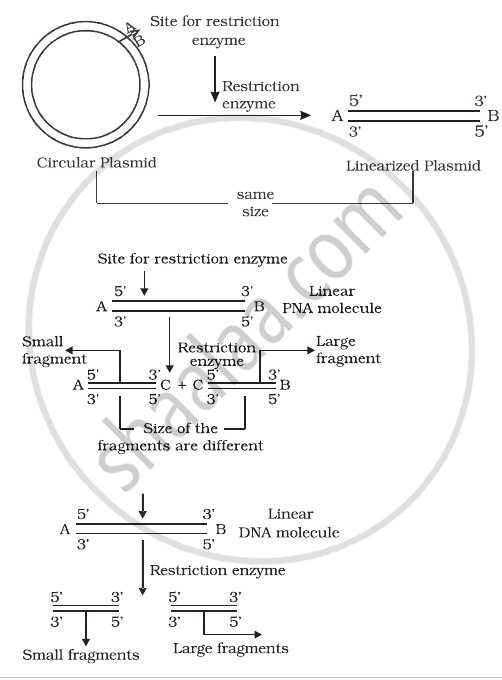Advertisements
Advertisements
Question
A plasmid DNA and a linear DNA (both are of the same size) have one site for a restriction endonuclease. When cut and separated on agarose gel electrophoresis, plasmid shows one DNA band while linear DNA shows two fragments. Explain.
Solution
It is because plasmid is a circular DNA molecule. When cut with enzyme, it becomes linear but does not get fragmented. Whereas, a linear DNA molecule gets cut into two fragments. Hence, a single DNA band is observed for plasmid while two DNA bands are observed for linear DNA in agarose gel.

APPEARS IN
RELATED QUESTIONS
How are 'sticky ends' formed on a DNA strand? Why are they so called?
Name the enzymes that are used for the isolation of DNA from bacterial and fungal cells for recombinant DNA technology.
Collect 5 examples of palindromic DNA sequences. Better try to create a palindromic sequence by following base-pair rules.
Answer the following question.
Write the use of restriction endonuclease in the formation of recombinant DNA.
Which of the given statements is correct in the context of visualizing DNA molecules separated by agarose gel electrophoresis?
Would you choose an exonuclease while producing a recombinant DNA molecule?
What does H in’ ‘d’ and ‘III’ refer to in the enzyme Hind III?
State the importance of elution in this process.
Given below is the restriction site of a restriction endonuclease Pst-I and the cleavage sites on a DNA molecule.
\[\ce{5' C - T - G - C - A \overset{\downarrow}{-}{G 3'}}\]
\[\ce{3' G\underset{\uparrow}{-} A - C - G - T - C 5'}\]
Choose the option that gives the correct resultant fragments by the action of the enzyme Pst-I.
What are the protruding and hanging stretches of DNA produced by these restriction enzymes called? Describe their role in the formation of rDNA.
